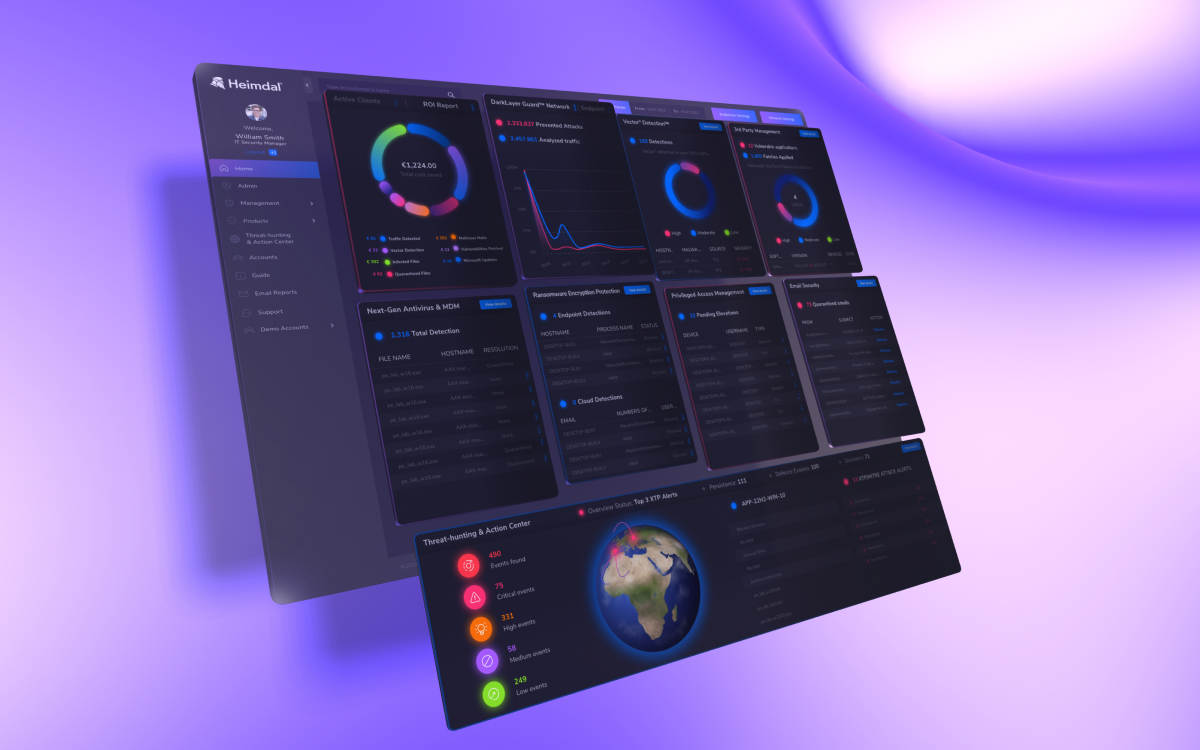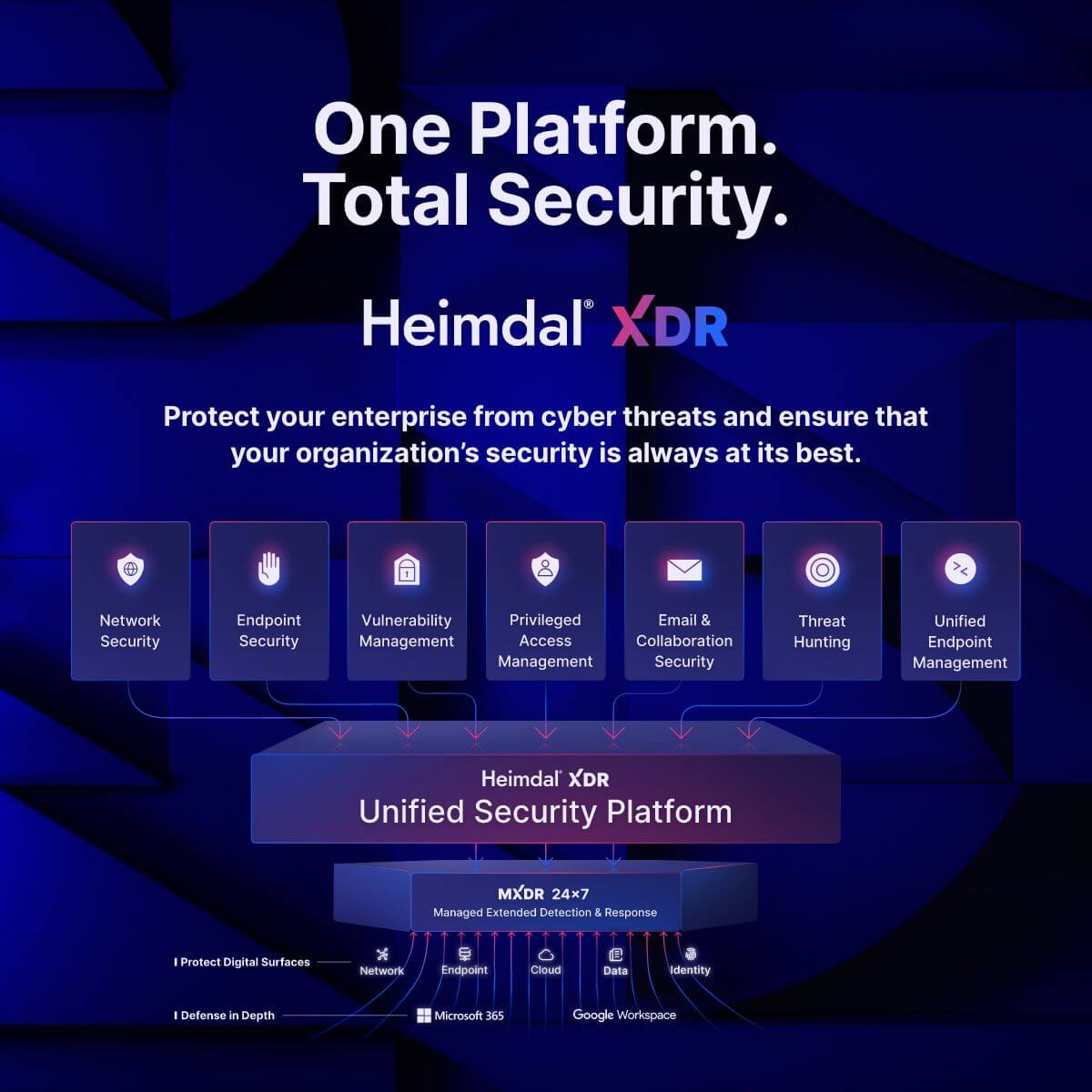Contents:
When deciding on the right cybersecurity solution for your business, the comparison of Palo Alto vs. ESET is essential to ensure you choose a platform that meets your security and performance requirements.
In this article, we will be comparing Palo Alto Networks Cortex XDR and ESET Endpoint Security, analyzing their features, pricing, pros, cons, and more.
Palo Alto Networks Cortex XDR Overview
The debate of Palo Alto vs. ESET often comes down to features like advanced threat detection and ease of deployment.
Palo Alto Networks Cortex XDR is a security platform that covers all your bases—endpoints, networks, and the cloud. It provides deep visibility and control, helping you prevent, detect, and respond to cyber threats using AI-driven analytics.
Cortex XDR is particularly well-suited for organizations looking for a comprehensive, integrated solution that unifies multiple security layers into a single platform.
Palo Alto Networks Cortex XDR Features
- Unified Security: Integrates protection across endpoints, networks, and cloud environments, offering a centralized view for incident detection and response.
- Behavioral Analytics: Uses machine learning and user behavior analytics to detect unusual activity and prevent threats before they escalate. Cortex XDR’s behavioral analytics continuously improve through AI to reduce false positives.
- Customizable Policies: Allows security teams to create and tailor policies to meet specific business needs, providing flexible security controls and response workflows.
- Extended Detection and Response (XDR): Extends visibility across cloud workloads, endpoints, and network traffic for comprehensive threat detection and response.
- Automated Remediation: Automatically resolves threats using integrated remediation capabilities, reducing the need for manual intervention.
Palo Alto Networks Cortex XDR Pricing
Cortex XDR offers a subscription-based pricing model that scales based on the number of endpoints and the features included. It is designed for medium to large enterprises, offering flexibility and various pricing tiers depending on the level of protection needed.
For example, Cortex XDR Prevent provides baseline protection, while Cortex XDR Pro includes more advanced threat detection and response capabilities.
Palo Alto Networks also offers a free trial, allowing businesses to evaluate the platform before committing to a subscription.
Palo Alto Networks Cortex XDR Ease of Use
For businesses seeking robust endpoint protection and ease of use, comparing Palo Alto vs. ESET can help identify the ideal solution.
While Cortex XDR is powerful, the initial setup can be complex due to its extensive configuration options. However, once the system is properly configured, it provides deep insights and control over your security landscape.
The platform’s centralized dashboard offers a user-friendly interface for managing incidents, but some users report a steep learning curve when mastering the advanced features and custom reporting tools.
Pros
- Comprehensive coverage: Cortex XDR protects multiple environments, including endpoints, networks, and cloud platforms, making it an all-in-one solution for enterprises.
- Advanced behavioral analytics: Detects sophisticated threats using AI, improving over time and offering detailed insights into suspicious activities.
- Highly customizable policies: Security teams can tailor the platform to specific use cases, ensuring that it meets the unique security needs of different organizations.
- Reduced manual workload: Automated remediation and streamlined incident management significantly reduce the time spent managing threats.
Cons
- Complex to set up: The extensive configuration options can make initial deployment challenging, particularly for businesses with limited IT resources.
- Advanced features may be difficult to manage: Some users report that the platform’s depth and flexibility require a steep learning curve, especially when customizing advanced security settings and reports.
Use Cases
Cortex XDR is ideal for large enterprises that need robust, customizable security across multiple environments—endpoints, networks, and cloud.
It is particularly effective for organizations with complex infrastructures, where visibility across different systems is crucial for preventing advanced threats.
ESET Endpoint Security
ESET Endpoint Security is a robust endpoint protection platform (EPP) that safeguards networks and devices from a wide array of cyber threats.
It leverages advanced threat detection and real-time protection across different operating systems, making it ideal for both small and large businesses.
ESET’s software is known for its low system resource usage and high malware detection rates, ensuring minimal impact on system performance while delivering strong security.
Features
- Multi-Layered Protection: ESET’s solution includes antivirus, firewall, and intrusion detection, providing defense against malware, ransomware, and other threats. It also supports cloud sandboxing for advanced threat analysis.
- Behavioral Analysis and Machine Learning: ESET uses behavior-based detection to identify and mitigate new threats, supported by its machine learning engine for continuous learning and refinement of threat profiles.
- Centralized Management: ESET offers both on-premises and cloud-based management, allowing security administrators to manage all endpoints, apply security policies, and monitor system health from a single interface, reducing overhead and administrative burden.
- Cross-Platform Support: The platform supports a variety of devices, including Windows, macOS, Linux, and mobile devices (iOS and Android), making it a versatile choice for organizations with diverse infrastructure.
Pricing
ESET Endpoint Security pricing is tiered and starts at around $210 per year for five devices.
The price can scale depending on the number of devices and the complexity of the required features, such as advanced threat detection or encryption. While ESET is not the cheapest solution on the market, it is often considered cost-effective for the level of protection it provides.
Ease of Use
ESET Endpoint Security is known to be easy to setup, particularly through its centralized console, ESET PROTECT.
The platform allows administrators to automate updates and manage security settings with minimal manual intervention.
However, more advanced features, such as custom reporting and incident analysis, may require additional configuration and expertise.
Pros
- High Detection Rates: ESET is known for its strong malware detection capabilities, consistently rated highly in independent tests.
- Low System Impact: ESET is lightweight, which ensures that it runs efficiently without significantly slowing down systems.
- Comprehensive Threat Protection: The solution offers protection across various attack vectors, including ransomware, malware, phishing, and network intrusions.
- Flexible Deployment: ESET supports both on-premises and cloud-based management, making it adaptable to various business needs.
Cons
- Pricing: While ESET offers a strong security suite, some users report that it is more expensive than other competitors in the market, especially for small businesses.
- Limited API Integration: ESET Endpoint Security does not offer API access, which may be a limitation for companies looking to integrate it deeply into custom workflows.
- Occasional Update Issues: Some users report issues with certain security updates, particularly when integrating with other software like Outlook.
Use Cases
ESET Endpoint Security is ideal for mid-sized to large enterprises looking for a scalable security solution.
It’s especially beneficial for organizations with a distributed workforce or diverse device management needs, as it supports a wide array of operating systems and devices.
Best Alternative: Heimdal® XDR
If you’re looking for a flexible, unified solution that delivers cutting-edge protection, look no further than Heimdal® XDR. Our solution combines next-level threat intelligence, detection, and response capabilities into a seamless package that adapts to your business needs.

Heimdal® XDR empowers your company with real-time, scalable security—designed to tackle the toughest cyber threats head-on, including complex multi-vector attacks and advanced malware. Whether you’re a growing business or a large enterprise, Heimdal offers a future-proof, all-in-one defense platform.
What Heimdal® XDR Offers?

Our platform is the widest cybersecurity platform on the market! Choosing Heimdal® XDR means you’re getting an all-encompassing cybersecurity powerhouse built for comprehensive threat management. Here’s what you can expect:
- Advanced Threat Hunting: Actively seek out hidden threats before they wreak havoc on your network.
- Automated Remediation: Let Heimdal handle the heavy lifting by automating responses to attacks, minimizing damage in real time.
- Multi-Layered Endpoint Detection: Protect every device with advanced endpoint protection that detects and neutralizes threats across your network.
- Threat Tracking Scans: Continuous scanning and tracking ensure no vulnerability goes unnoticed, keeping you a step ahead of attackers.
- Proactive Attack Prevention: Leverage predictive analytics to stop attacks before they even begin.
- Vulnerability Management: Identify and patch weak spots before they can be exploited.
- Patch Management: Streamline software updates and security patches to keep your infrastructure secure and up-to-date.
- Privileged Access Management: Safeguard your critical assets by controlling and monitoring access to sensitive systems.
- Email Security: Protect against phishing and malicious emails with powerful filtering and threat detection.
Conclusion: Which Solution Should You Choose?
When it comes to performance and scalability, the Palo Alto vs. ESET comparison highlights key differences for various business sizes.
Palo Alto Networks Cortex XDR offers integrated detection and response capabilities across endpoints, networks, and cloud environments, making it ideal for enterprises with complex infrastructures.
ESET Endpoint Security provides lightweight, resource-efficient protection suitable for smaller organizations.
For businesses seeking a more unified, scalable solution, Heimdal® XDR offers advanced multi-layered security with real-time threat detection, making it a compelling alternative.










 Network Security
Network Security
 Vulnerability Management
Vulnerability Management
 Privileged Access Management
Privileged Access Management  Endpoint Security
Endpoint Security
 Threat Hunting
Threat Hunting
 Unified Endpoint Management
Unified Endpoint Management
 Email & Collaboration Security
Email & Collaboration Security









